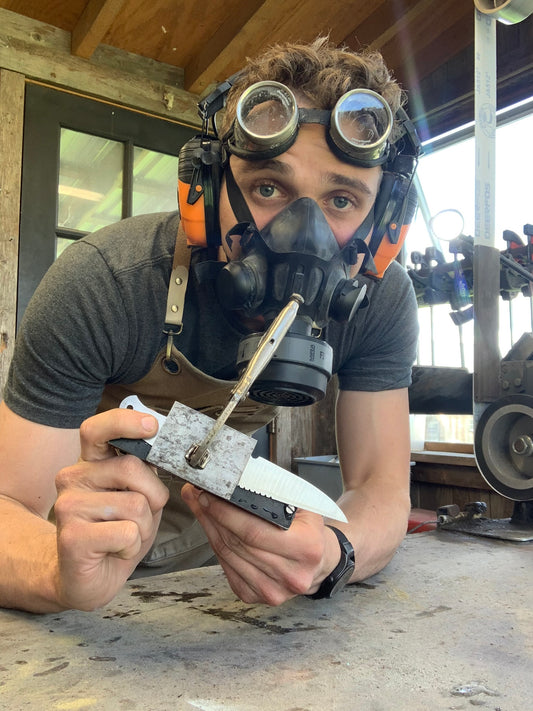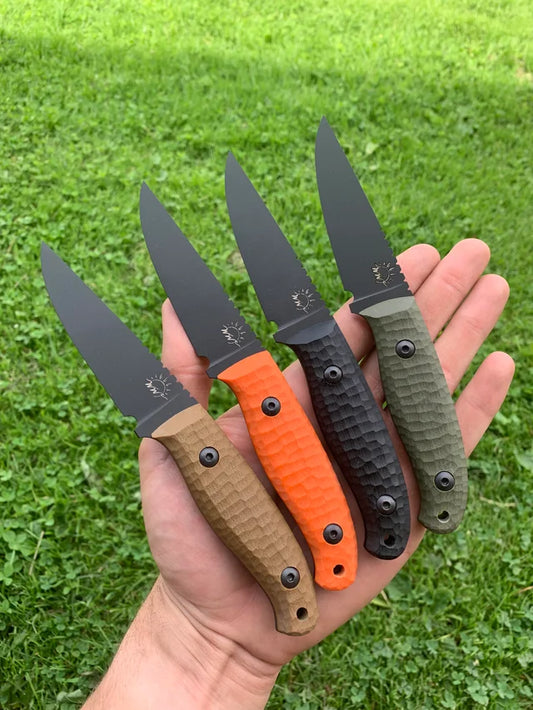After having the pleasure of interacting with hundreds of aspiring knife-makers through various online forums, I'm slowly beginning to realize that one of the biggest hurdles faced is one simple question: where the Hell do I start? Well, that's not exactly the easiest question to answer, but I'll certainly do my best. Knife-making, especially early on, is what I like to refer to as a "spectrum hobby". Let me explain: knives, at their core, are incredibly simple tools (especially fixed blades). Not to degrade my own craft, but they're more or less just a wedge, one that can be produced through an entire array of means. I've seen absolutely gorgeous knives be made with nothing more than a bastard file, a propane torch, and a whole lot of determination. And, of course, I've seen the total opposite with CNC machines and other mechanical wonders. Regardless of how you decide to pursue the making of a knife, know that it can be accomplished as simply, or as complexly as you care to make it. Personally, I always encourage beginners to start with the bare minimum. Unless you have a lot of disposable income (let's be real, a lot of us don't these days), it's better to dip your toes in the water through the least expensive means possible. That way, if you ever find yourself in the unfortunate situation where you discover a burning hatred for knife making, you're not several thousand dollars in the hole over an "investment" in entirely niche tools.
To give you an idea of where I started and where I'm at now, I'll offer a comparison of tools. At the time of this post, I really only use 5 main tools: my Coote 2x72 Belt Grinder, an old drill press, a Milwaukee Porta-Band (one that's mounted in a vertical position), a Dremel 3000, and a 120v EvenHeat Kiln. Of course, there are a few other little things sprinkled here an there like a toaster oven for heating up kydex, a press for molding the kydex to the knife, a grommet set, an air-compressor for cooling the stainless steel, etc. Besides acquiring some more quality equipment, the actual tools themselves really haven't changed all that much. I started out with a forge made from a weed-killer torch, a 4x36 harbor freight belt grinder, that same old drill press, and a Klein hacksaw. While these tools might not allow me to make the knives at the rate I do today, I bet if you were to set me up with this same equipment now with my current skill set, I bet I could make a blade not too different from the ones I make with my current workshop. The point of all is this: it's not really the tools, it's the person using them. I will never argue against the efficiency of the Coote Grinder in comparison to its Harbor Freight counterpart, there's a good reason why I use it, BUT the limitations of that machine would not prevent me from making a quality product. Beneath what you see offered at Waxed Wing today is hundreds of hours of practice, dozens of poor designs, and countless attempts to perfect the craft (which is something that will more than likely be a life-long endeavor). If there's anything in this life that you want to learn, it will have to be achieved through the simple act of trying. After all, it's not the first step that counts, but the one that comes after it. As cheesy as it might sound, persistence *really* is the key to learning the craft.


